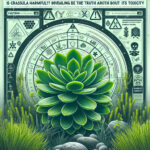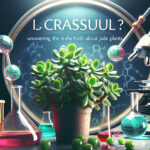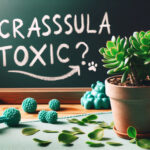Introduction to Crassula Plants
Imagine a verdant splash of greenery brightening up your cozy reading corner or a charismatic succulent greeting you from the windowsill as you brew your morning cup of joe. That’s the charm of Crassula, a genus of succulent plants that has captivated hearts and adorned homes across the globe. With a flair for thriving in indoor environments and an easy-going nature, it’s no wonder these plants have become a mainstay in the realm of houseplants.
Characterized by their fleshy, often glossy leaves that store water, Crassulas are the perfect companions for those who appreciate the beauty of plants but might not have the time for high-maintenance foliage. From the celebrated Crassula ovata, commonly known as the Jade Plant or Money Tree, which is revered for its prosperity-bringing reputation, to the undulating waves of Crassula muscosa’s tiny, interlaced leaves, these plants offer a diverse array of textures and forms to fit any plant enthusiast’s taste.
Take, for instance, the bewitching Crassula capitella, with its campfire-like foliage that shifts from lime green to fiery red, or the quirky Crassula umbella, whimsically shaped like an open umbrella, enchanting onlookers with its unexpected silhouette. In the comfort of your home, these resilient beauties ask for little yet give so much, serving as living art and daily reminders of nature’s ingenuity.
For those embarking on their Crassula journey, our comprehensive guide is brimming with insights on how to keep these charming succulents flourishing. Whether basking in bright, indirect light or nestling in warm, dry spots, Crassulas adapt to their surroundings, proving that sometimes, the best things in life truly are the simplest.
Scroll down and you’ll find an image that captures the essence of Crassula’s allure, embodying why so many choose to adorn their living spaces with these delightful specimens.
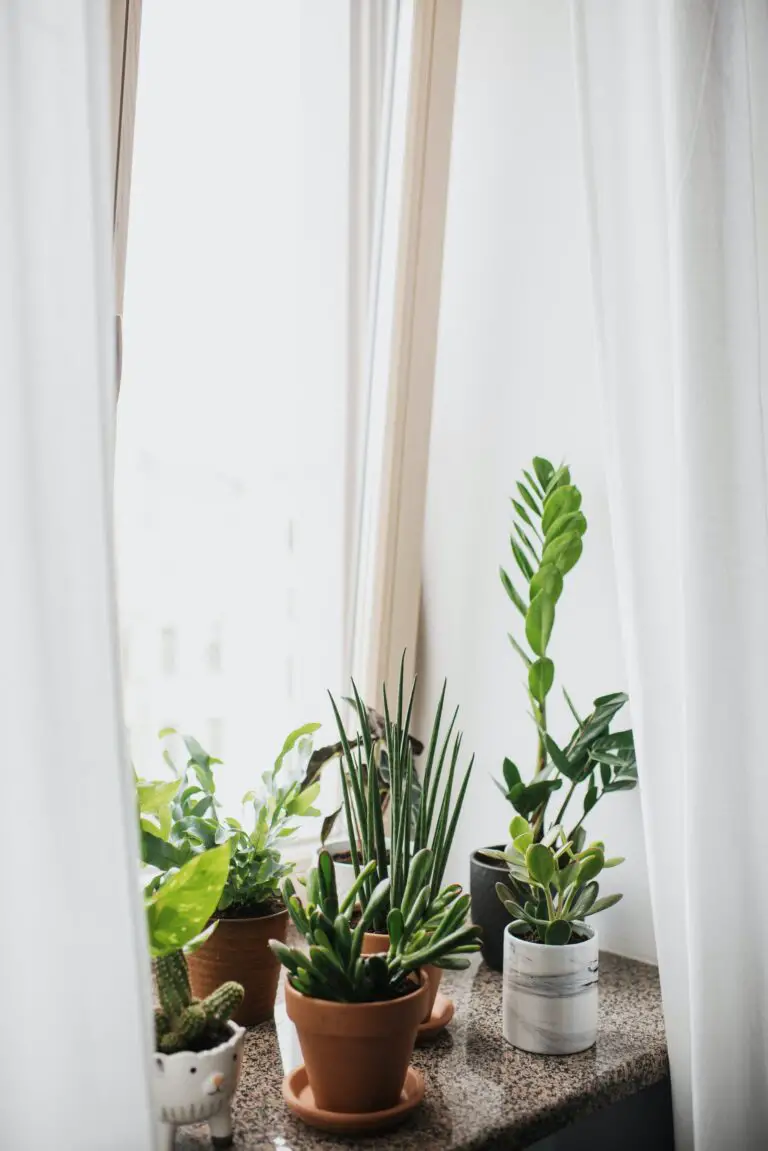
This visual feast showcases the decorative versatility and effortless charm that Crassulas can bring into any indoor setting. And as you gaze into this lush imagery, you may wonder: amidst all this beauty, could there possibly be a hidden danger? Stay with us as we untangle the threads of this green mystery—is Crassula toxic, or is it as innocuous as its quaint appearance would have us believe?
Understanding Plant Toxicity
When it comes to our leafy companions, not all plants are the friendly flora they appear to be. In fact, some can be downright villainous when it comes to their effects on humans and our four-legged friends. But what exactly is plant toxicity? Imagine this: a chemical arsenal hidden beneath the surface of seemingly innocent leaves, ready to wreak havoc should anyone dare to take a nibble.
For us humans, an encounter with a toxic plant might simply mean an itchy rash or a stomachache—but for our pets, it’s a whole other ballgame. They might not know to stay away from the treacherous leaves of a Sago Palm, for example, putting them at risk of severe health issues.
The general signs of plant poisoning can range from mild (slight nausea, a rash) to severe (vomiting, difficulty breathing, seizures). It’s like the body’s alarm system going into overdrive, trying to combat the intruding toxins. And similar to a game of telephone gone wrong, the more toxic the plant, the more intense and potentially dangerous the message becomes.
To put this into perspective, let’s take a case straight out of a pet owner’s nightmare: Rover, the family dog, decides that the new houseplant, while not exactly a juicy steak, is worth a taste test. The result? A frantic trip to the emergency clinic because Rover’s now dealing with vomiting, diarrhea, and a severe case of “I should not have eaten that.”
But don’t just take my word for it; here’s a video that delves into the dark side of our verdant friends, revealing why some plants are not to be trifled with:
Understanding plant toxicity is crucial, not just for the well-being of our pets but for ourselves as well. It’s not about living in fear, but about respecting nature’s quiet power, hidden behind a façade of peaceful green leaves and colorful blooms. Educating ourselves on which plants to keep in our homes and gardens can mean the difference between a serene green space and a botanical booby trap.
The Toxicity of Crassula Species
When it comes to the Crassula family, which boasts a wide range of succulent species, there’s a particular member that often becomes the center of attention in discussions about plant toxicity—the Crassula ovata. Commonly known as the jade plant, this succulent is celebrated for its glossy, plump leaves that can add a touch of green sophistication to any space. But if you’re a pet owner or concerned about the safety of small children, taking a closer look at the Crassula ovata’s toxic properties is essential.
According to the ASPCA, which is a trustworthy source for pet safety, the jade plant is indeed toxic to cats and dogs. If ingested, it can cause symptoms ranging from vomiting and lethargy to a more severe reaction that could require medical attention. This is not to say that all members of the Crassula genus are dangerous; many species are perfectly safe. However, with the popularity of Crassula ovata as an ornamental plant, its toxic potential cannot be overlooked.
Real-life examples aren’t hard to find. Picture a meticulously arranged living room with a Crassula ovata sitting atop a sunny windowsill. While it may look picture-perfect, a curious cat or playful pup could easily treat this greenery as a snack, leading to undesirable emergencies. The good news? There’s a wealth of information available to help plant enthusiasts make informed decisions about which Crassulas to bring into their homes.
To better protect your four-legged friends and maintain that zen vibe that Crassula plants are so loved for, consider researching alternative Crassula species that are non-toxic and just as aesthetically pleasing. After all, a harmonious home is a happy home, both for you and your cherished companions.
Embarking on the succulent journey with mindfulness ensures that the lush leaves of Crassula species are enjoyed safely. And for those with a knack for nurturing these plants, delving into their care requirements might reveal even more fascinating aspects of these resilient succulents.
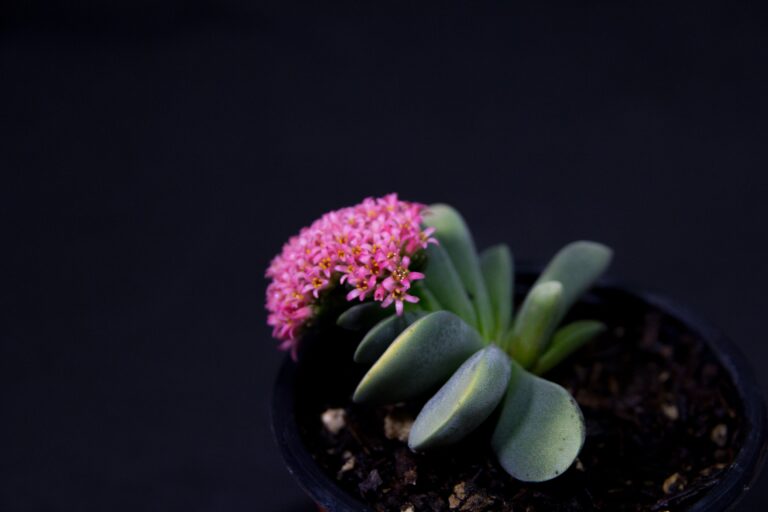
Crassula and Pet Safety
As the proud parent of a curious cat or a doting dog, you might have caught your furry friend nibbling on your greenery a time or two. But when it comes to your Crassula collection, it’s crucial to pause and ponder: could these succulents spell trouble for your four-legged family members?
Well, the answer isn’t as straightforward as a dog’s bark or a cat’s meow. Discovering the toxicity of Crassula plants to pets can often feel like a detective story. Imagine this: you’ve just brought home a luscious Crassula. It sits there, casting a serene vibe across your room. But then, your playful pal decides it’s snack time. Fast forward a few hours, and you find yourself with a queasy pet on your hands.
Symptoms to watch out for include vomiting, diarrhea, lethargy, or even more severe reactions like tremors. The plant’s sap contains compounds that can be irritants, and if ingested in large amounts, they may lead to poisoning.
If such mischief occurs, don’t panic. Promptly remove any remaining plant bits from reach and provide first aid by offering a small meal to dilute the sap in the stomach. Call your veterinarian for advice, and they might recommend bringing your pet in for a check-up.
While our green-thumbed instincts push us to cultivate the most enviable indoor jungles, ensuring the safety of our resident critters should always top our list. Take protective steps by placing these succulents high up or in a separate, pet-free zone. After all, prevention is better than cure.
And now for a vivid impression of our succulent friend: 
Ultimately, armed with the right knowledge and vigilance, you can enjoy both your pet’s playful energy and your Crassula plants’ calm beauty without incident. Remember that with great plants come great responsibility, so stay informed, stay cautious, and keep your pets safe and sound.
Crassula Plants and Human Health
Whether you’re a gardening rookie or a green-thumbed sage, there’s no denying the charm of Crassula plants. These succulent beauties are worshipped by plant enthusiasts for their plump leaves and low-maintenance vibe. But, let’s slice through the foliage and ask the pressing question: Is Crassula toxic?

Imagine this: a sunny Saturday, you’re admiring your jade-like Crassula when suddenly, little Timmy decides it’s snack time for his curious taste buds. Panic ensues—is Timmy in danger? Here’s the dirt: Crassula plants are indeed toxic to both children and adults if ingested. They contain compounds that can cause stomach upset, nausea, or worse when munched on. So, it’s smart to keep these succulents out of reach of kids and pets, who might mistake them for a leafy treat.
But it’s not all doom and gloom. With the right safe handling practices, Crassula can coexist peacefully in your home. Always handle with care, ensuring you don’t let toddlers or furry friends turn these green beauties into a salad. It’s all about respect—admire from a distance, touch with precaution, and most importantly, educate your household about the potential risks.
For those of us who can’t resist the allure of Crassula, there are neat tricks to mitigate the risks. Create a high-tiered plant oasis, using shelves out of reach, or opt for terrariums that act as a clear barrier between plant and predator (the toddler kind, that is!).
Remember, it’s not about spreading fear, but about spreading knowledge. With this fresh insight into Crassula and human health, you can enjoy the sculptural elegance of these succulents without the worry. Be savvy, stay informed, and here’s to safe and stylish plant parenting!
Preventing Crassula Toxicity in Your Home
Are you a proud parent of a Crassula plant, that charming and picturesque succulent that graces many homes? If you’ve ever worried about its reported toxicity, particularly in homes with furry friends, you’re not alone. Let’s roll out a green carpet of safety measures to ensure your Crassula coexists with your pets and family without any mishaps.
First and foremost, knowledge is power. Understanding that is crassula toxic can be crucial to pets, especially cats and dogs, who might be tempted to nibble on its leaves, sets the stage for preventative action. Earmark a spot in your home that’s out of paws’ reach. Maybe that’s a high shelf, or better yet, a hanging planter that turns your Crassula into a living piece of art, safely suspended in the skyline of your living room.
Safe Havens for Your Succulent
It’s not just about elevation, though. Consider plant stands with sleek, slippery poles that dissuade even the most acrobatic of cats from climbing. Or think about clear plastic domes that shield smaller plants — creating a microclimate that your Crassula will love, while keeping it securely out of reach.
Animal-Friendly Alternatives
If your pet’s curiosity is as boundless as the sky, it might be wise to consider animal-friendly plant alternatives that can safely coexist with your pets. Spider plants, for instance, can provide the same lush greenery without the worry. Positioning these safer species in the more accessible spots gives your pet a jungle to explore, while the Crassula gets its well-deserved, high-altitude solitude.
Non-Toxic Plant Care
When it comes to caring for your Crassula, doing so safely is a cinch. Opt for organic, pet-safe fertilizers and pesticides. Moreover, always keep your plant care tools cleaned and stored — to prevent any accidental tasting sessions by curious critters. And remember, the best antidote to toxicity is prevention and attentive plant parenting.
Speaking of plant care, here’s a video brimming with useful tips to keep your Crassula thriving while ensuring it stays safe around the curious noses and paws in your home:
By following these strategies, you can foster a green, serene, and safe atmosphere at home. Your Crassula doesn’t have to be a forbidden fruit in your personal Eden; with just a bit of plant-savvy decorum, it can thrive as a cherished, harmless part of the family tableau.
Treatment and Response to Toxic Exposure
When it comes to houseplants, the Crassula family is a fascinating collection of succulents that brighten up our homes. But behind their jade-like allure might lurk a question many pet owners and parents ponder: Is Crassula toxic? Let’s dive into the practical steps one should take if there’s any suspicion of toxicity affecting our cherished ones – furry, feathered, or otherwise.
What to Do If You Suspect Toxicity
If your pet or a person has ingested parts of a Crassula plant and you’re worried about potential toxic effects, time is of the essence. Follow these immediate action steps:
- Firstly, remain calm. A clear mind will help manage the situation more effectively.
- Remove any plant remnants from the mouth and safely keep a sample of the plant. This could be very useful for identification purposes.
- For pets: Contact your veterinarian straight away or rush to an emergency veterinary clinic. If it’s after hours, seek out a 24/7 animal poison control center. Examples come to life with stories like Buster, a curious pup who mistook a Crassula leaf for a tasty treat, only to end up at the vet for an overnight stay.
- For humans: Call your local poison control center without delay. If there are severe symptoms like difficulty breathing, unconsciousness, or seizures, dial emergency services immediately. Consider the recent case of toddler Lily, who, unbeknownst to her parents, nibbled on a Jade Plant leaf, leading to a speedy and unplanned trip to the ER.
- Monitor the individual closely for any signs of distress, such as vomiting, diarrhea, or unusual behavior, and report these to the health professional.
- Follow the guidance provided by experts, which may include administering activated charcoal, inducing vomiting, or providing supportive care until medical help is available.
Understanding the nature of the exposure and responding rapidly can greatly influence the outcome. But prevention, as they say, is always better than cure. So, proactively keeping such plants out of reach from those who might not grasp their potential danger is the best strategy.
Join me as we watch a comprehensive guide on dealing with such emergencies, further enlightening us on the best practices post-exposure to toxic plants:
While the enchanting Crassula might be a stunner on your windowsill, it’s crucial to keep in mind that sometimes beauty comes with a caveat. By being informed and prepared, you can enjoy these succulents without compromising the well-being of your beloved companions or family.
Selecting Safe Houseplants
When you’re on a quest to bring a little bit of Mother Nature indoors, it’s crucial to consider the furry and tiny humans who share our space. Not all that’s green is good for every member of the household, and when it comes to choosing houseplants, safety should be at the top of your list. But fear not! Whether you’re a proud pet parent or have curious kiddos toddling around, you can still cultivate your indoor oasis.
Imagine a lively living room, sunshine pouring in, and your cat, Mr. Whiskers, napping peacefully among a spread of lush, non-toxic greenery. Or picture your toddler, Ellie, learning to walk and explore, grabbing at leaves that are safe to touch and taste. This can be your reality with just a little bit of plant savvy.
The good news is that a variety of houseplants won’t make you choose between your love for plants and the well-being of your pets and children. Spider plants, with their cheerful arching leaves and easygoing nature, make for a perfect choice; they’re resilient, and they purify the air. Then there’s the classic Boston fern, a shaggy friend that softens any room without offering any risk to nibblers. And let’s not forget about the ever-popular bamboo palm, a statement piece that’s both pet-approved and perfect for creating that tropical escape in your reading corner—in the safest way possible.
While we nurture spaces we love, incorporating plants that align with the health and happiness of our entire household is an expression of care that reaches beyond aesthetics. Opting for non-toxic houseplants means peace of mind, and who wouldn’t want to relish in the tranquility of a green haven, knowing every living being under your roof is safe and sound?

Frequently Asked Questions
Got a burning question about the Crassula plant’s toxicity? We hear you! Join us as we dive into the nitty-gritty of this popular succulent’s chemical profile. Whether you’re a seasoned green thumb or just starting your botanical journey, knowing your plants is key—especially when it comes to safety. Hold tight; it’s time to get the lowdown on what’s pot-entially harmful and what’s not!
Is Crassula Harmful to Humans?
Here’s the 411 for all you plant enthusiasts out there. If you’ve been eyeing that Crassula plant for its fleshy, jade-like leaves, but paused because you might have kiddos or curious critters around—breathe easy! Typically, Crassula plants are not a major toxic threat to humans. Sure, it’s not a salad ingredient, and nibbling on the leaves should be a no-go, but growing one on your shelf shouldn’t be a cause for alarm. But hey, it’s always smart to keep plants out of reach, especially when little hands are prone to explore!
Can Crassula Affect Our Furry Friends?
Now, when it comes to your four-legged companions, it’s a slightly different tale. Some types of Crassula plants can indeed be toxic to pets. Cats and dogs might experience a bout of nausea, vomiting, or even lethargy if they decide to make a snack out of your green buddy. If Mr. Whiskers starts eyeballing your Crassula, maybe it’s time to move it to a pet-free zone, or even better, high enough where those paws can’t reach!
Safety Precautions with Crassula
Owning a Crassula plant comes with a simple mantra: admire, don’t consume. While they make fabulous low-maintenance pals for your indoor oasis, they’re not so palatable for ingestion. In the rare event someone does ingest Crassula, it’s generally not a trip to the emergency room, but keeping an eye out and consulting a healthcare provider is wise. For fur babies, a call to the vet wouldn’t hurt either if they’ve helped themselves to a green feast.
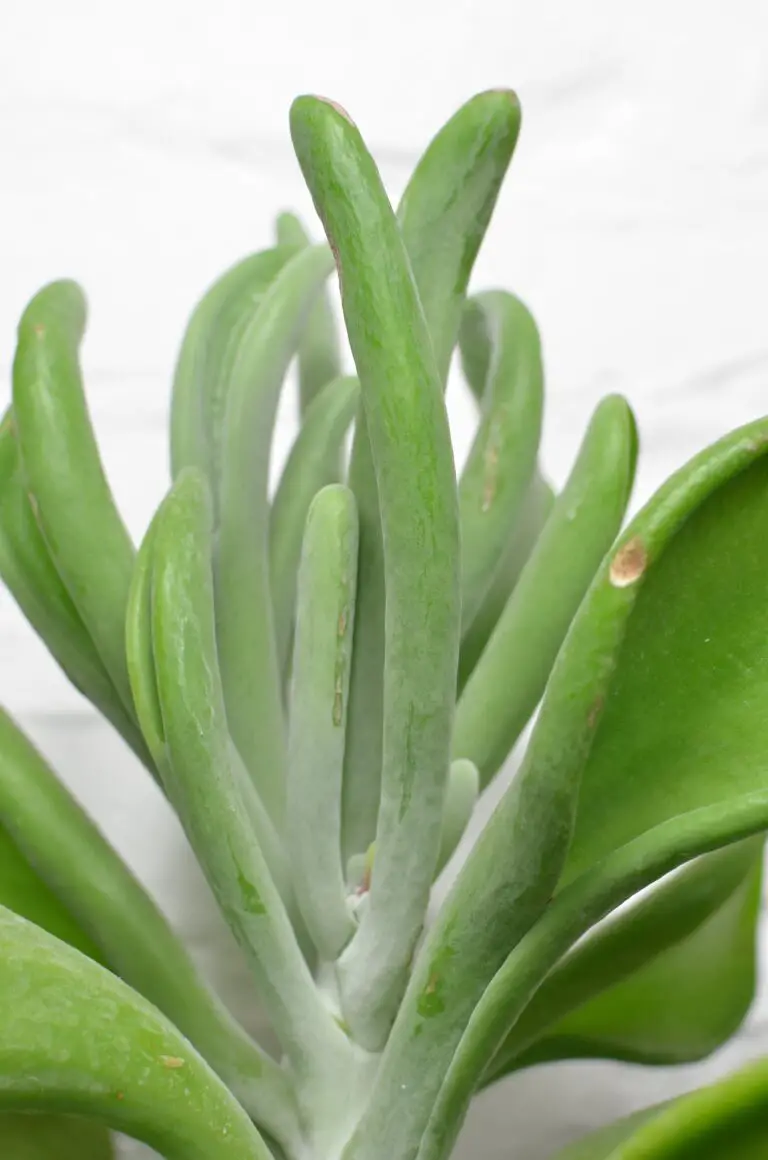
Imagine this: A quaint corner of your home graced by the serene beauty of a Crassula plant, basking in the sunlit glow of a lazy Sunday afternoon. It’s a picture-perfect scene, isn’t it? But always with a keen eye on who might be tempted by its verdant allure—safety first, Instagram-worthy home garden second. So, go ahead, cultivate your collection of lush Crassula plants, just remember to keep it “look but don’t touch” for the sake of everyone involved!
